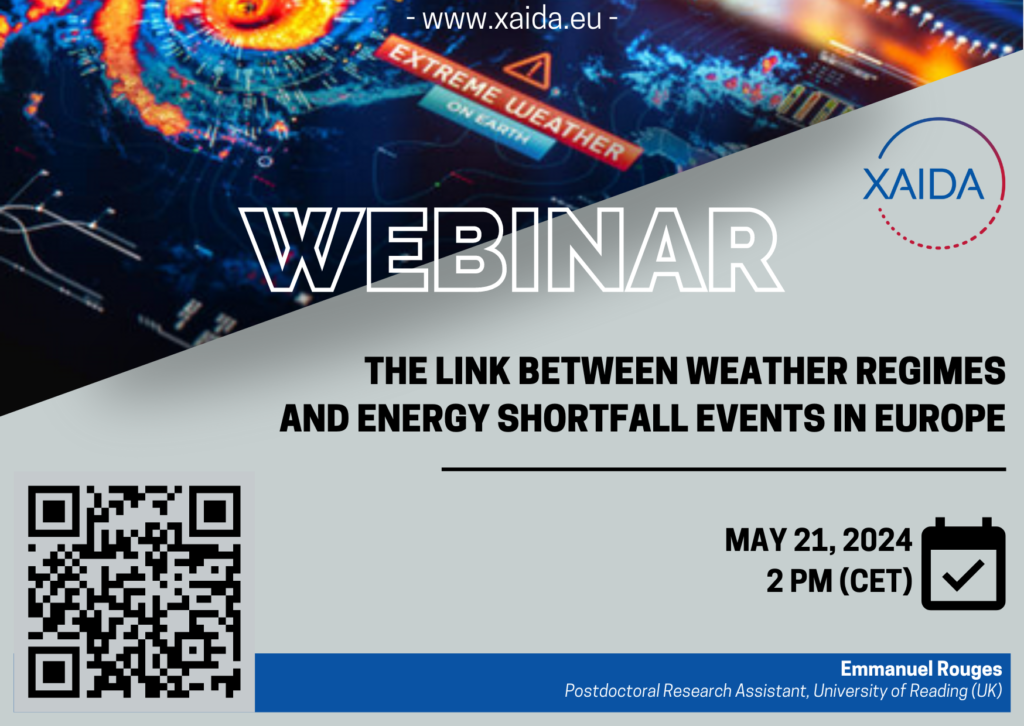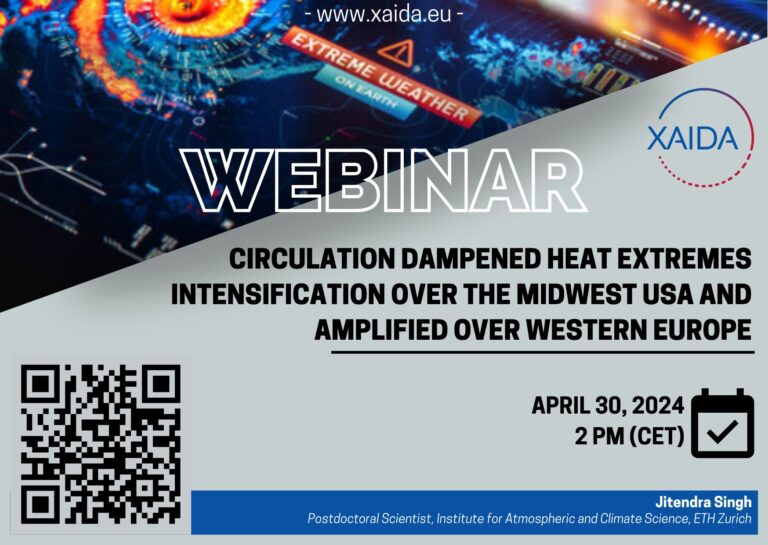XAIDA WEBINAR | THE LINK BETWEEN WEATHER REGIMES AND ENERGY SHORTFALL EVENTS IN EUROPE
XAIDA is now hosting an open monthly webinar. Within the XAIDA project, sixteen research institutes and climate risk practitioners, aim to develop and apply novel artificial intelligence methods to better assess and predict the influence of climate change on extreme weather. Join the webinar each month to dive into interesting topics such as machine learning for climate extremes, the societal impact of extremes, and education about climate change.
Coordination: Maria Gonzalez-Calabuig (University of València), Manon Rousselle (IPSL)
Assistance: Apolline Sauvignet (IPSL)
May 21th at 2 PM (CET)
Title: The link between weather regimes and energy shortfall events in Europe
Abstract:
In the context of climate change, countries are increasing their proportion of renewable energy generation, such as wind and solar. The integration of renewable energy sources into the current energy network is a challenging task, as these sources are highly dependent on weather. The main challenge is to balance energy demand and supply, as both are now weather dependent.
During the winter season, cold temperatures lead to high demand. If these cold conditions coincide with periods of low winds, renewable generation becomes low at the same times as energy demand is high. These periods of high demand and low generation have gained a lot of interest in the scientific literature and are defined as periods of high energy shortfall.
Recent studies have highlighted the influence of weather regimes or large-scale circulation patterns on both renewable energy generation and energy demand and shortfall.
In this research, the influence of weather regimes on energy shortfall days is investigated across 28 European countries during the winter. To this end, modelled energy data is analysed with respect to a weather regime classification.
The results show how blocking type regimes such as the Scandinavian Blocking, the Atlantic Ridge and the negative North Atlantic Oscillation, are most likely to favour periods of high shortfall. Additionally, large regions of Europe, and therefore multiple countries, are most likely to experience high shortfall during the same regime. This would suggest that multiple countries can simultaneously experience high shortfalls. In these circumstances, connection between the energy networks of multiple countries might not be sufficient to mitigate such high energy shortfall. The coldest winter (1962-1963) of the 20th century is used to highlight worst case scenarios, for which current and future energy networks need to be prepared.
Registration: xaidaproject@gmail.com








